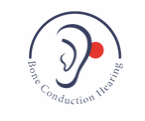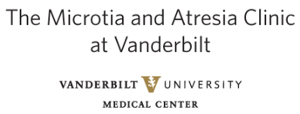Below is an article composed by Dr. Burt Brent explaining his findings on why Microtia may occur…
Incidence of Microtia
According to an extensive study conducted by Dr. Grabb in 1965, microtia occurs once in every 6,000 births [53]. The occurrence is estimated at one in 4,000 in Japanese, and as high as one in 900 to 1,200 births in Navajo Indians [1].
Evaluation of my first 1,000 microtia patients reveals that 52.8 percent of the ears are right; 32.4 percent are left; and 9.4 percent are bilateral. 63.1 percent of the patients are males, and 36.9 percent are females (see Table 1).
|
Table 1 – Microtia: Case Material |
|||||||
|
Cases |
%Total |
# Ears |
Cases |
%Total |
|||
| Right: |
582 |
(58.2%) |
582 |
Males: |
631 |
(63.1%) |
|
| Left: |
324 |
(32.4%) |
324 |
Females: |
369 |
(36.9%) |
|
| Bilateral: |
94 |
(9.4%) |
188 |
1,000 |
100% |
||
|
1,000 |
100.0% |
1,094 |
|||||
Hereditary Factors
In a superb study conducted by Rogers, structural, anatomic, and genetic inter-relationships were shown to exist between microtia, constricted, and protruding ears. In this thorough investigation, he demonstrated that these deformities are inter-related and can be hereditary [90].
Preauricular pits and sinuses, and a combination of pits, preauricular appendages (skin tags), cupping deformity, and deafness are all hereditarily dominant [74, 106]. Both dominant and recessive characteristics have been revealed in deafness associated with several auricular abnormalities [62]. Ear deformities frequently recur in families with Treacher-Collins Syndrome [89]. In my own experience, these are occasionally constricted ear deformities, an abnormality which is known to be hereditary [44, 86].
In a thorough, intensive survey of 96 families of their 171 microtic patients, Takahashi and Maeda ruled out chromosomal aberrations and concluded that inheritance must be multifactorial and that the recurrence risk is 5.7 percent [95]. In previous studies, others have found multifactorial inheritance between 3-8 percent in first degree relatives. Although Tanzer found that approximately 25 percent of his 43 microtia patients had relatives with evidence of branchial arch syndrome, microtia was present only in four instances [98].
In examining my own volume of cases, I found that 4.9 percent of the 1,000 patients had major auricular deformities recurring within the immediate family, i.e., parents, siblings, aunts, uncles, or grandparents. When “distant” relatives were included, the percentage jumped to 10.5 percent. If a couple has two children with microtia, the risk of recurrence is thought to be as high as 15 percent.
In 6 percent of my patients, preauricular skin tags or minor auricular defects were observed in the immediate family. This number rose to 10.3 percent when all relatives were included. Immediate family members with normal auricles but underdeveloped jaws or facial nerves were seen in 1.2 percent of my 1,000 patients.
Specific Factors
McKenzie and Craig [72] and Poswillo [85] theorize that tissue ischemia (decreased blood flow) resulting from an obliterated artery is the cause of developmental auricular abnormalities. This speaks to the deformity being caused by a problem arising during the fetus’ development rather than a hereditary problem. Interestingly, and in support of this theory, I have treated 10-12 patients with microtia who have a proven, identical twin with normal ears; I only have one set of identical twin patients where both twins have ear deformities. I also have more than 40 microtia patients in my practice with normal fraternal twin siblings, one with normal triplet siblings, and one with normal quintuplet siblings. Pediatric dysmorphologists state that many types of birth deformities are more common in multiple births and that this may be due to a phenomenon called “placental steal” syndrome, i.e., the placenta of the normal twin is often larger than the placenta of the abnormal one and that perhaps the normal twin is thus “stealing” circulation from the other twin who then develops abnormally because of it.
The occurrence of deafness and occasional microtia resulting from rubella (German measles) during the first trimester of pregnancy is well known. Also, use of certain drugs during this critical period may be causative; I have seen at least three cases of microtia that resulted from the mother’s ingestion of the tranquilizer Thalidomide [61a]. Accutane has also been cited as causing ear deformities when ingested during the first trimester [4, 55]. Several mothers of my microtia patients had been unaware of this problem and had used Accutane to control acne. Other medications that reportedly cause microtia are clomid [61] and retinoic acid [66].
Although one can occasionally link an actual causative event during early development, medical history analysis of my 1,000 patients reveals no consistent, unusual contributing factors. When asked if anything unusual occurred during the first trimester of pregnancy, 69.5 percent of the mothers said “no”; 2.9 percent had suffered influenza; 1.5 percent had contracted or been exposed to measles; 1.2 percent had suffered some “traumatic injury”; 1.2 percent had experienced radiation exposure; 3.7 percent had menstruated during the first trimester; 1.0 percent had hyperemesis; 0.8 percent were diabetic; 0.6 percent had “severe emotional problems”; 0.8 percent were exposed to tree sprays; and one mother mentioned excess alcohol intake. Use of various medications were also mentioned, the most common being “morning sickness drugs” (4.8 percent of patients’ mothers).
In conclusion, the occurrence of microtia is usually a random, sporadic event, and it is important for the parents to understand that the deformity was not caused by anything the mother did before or during the pregnancy; and the risk of recurrence within the family is about five percent, or, put another way, one in twenty.
The above information can be found in the following link by Dr. Burt Brent at: http://www.microtia.us.com/microtia-atresia-possible-cause-and-incidence.html
Copyright 1998-2011 Dr. Burt Brent. All rights reserved.
Atresia Without Microtia
Below is an article discussing a test that can confirm the presence of Atresia without Microtia:
The only known source of atresia without microtia that can be confirmed by blood test is Chromosome 18q- syndrome.
Chromosome 18q- Syndrome
Important
It is possible that the main title of the report Chromosome 18q- Syndrome is not the name you expected. Please check the synonyms listing to find the alternate name(s) and disorder subdivision(s) covered by this report.
Synonyms
* 18q- Syndrome
* Chromosome 18 Long Arm Deletion Syndrome
* Chromosome 18, Monosomy 18Q
* Monosomy 18q Syndrome
* Del(18q) Syndrome
* 18q Deletion Syndrome
Disorder Subdivisions
* None
General Discussion
Chromosome 18q- syndrome (also known as Chromosome 18, Monosomy 18q) is a rare chromosomal disorder in which there is deletion of part of the long arm (q) of chromosome 18. Associated symptoms and findings may vary greatly in range and severity from case to case. However, characteristic features include short stature; mental retardation; poor muscle tone (hypotonia); malformations of the hands and feet; and abnormalities of the skull and facial (craniofacial) region, such as a small head (microcephaly), a “carp-shaped” mouth, deeply set eyes, prominent ears, and/or unusually flat, underdeveloped midfacial regions (midfacial hypoplasia). Some affected individuals may also have visual abnormalities, hearing impairment, genital malformations, structural heart defects, and/or other physical abnormalities. Chromosome 18q- syndrome usually appears to result from spontaneous (de novo) errors very early during embryonic development that occur for unknown reasons (sporadically).
Cited and sourced from the Atresia Repair California Ear Institute web page found at:
http://www.atresiarepair.com
Microtia/Anotia
The following on line abstract offers some genetic history regarding Microtia/Anotia that was conducted through Italy.
J Med Genet. 1995 Jun;32(6):453-7.
Epidemiology and genetics of microtia-anotia: a registry based study on over one million births.
Mastroiacovo P, Corchia C, Botto LD, Lanni R, Zampino G, Fusco D.
Department of Paediatrics, Catholic University, Rome, Italy.
Abstract
The epidemiology and genetics of microtia-anotia (M-A) were studied using data collected from the Italian Multicentre Birth Defects Registry (IPIMC) from 1983 to 1992. Among 1,173, 794 births, we identified 172 with M-A, a rate of 1.46/10,000; 38 infants (22.1%) had anotia. Of the 172 infants, 114 (66.2%) had an isolated defect, 48 (27.9%) were multiformed infants (MMI) with M-A, and 10 (5.8%) had a well defined syndrome. The frequency of bilateral defects among non-syndromic cases was 12% compared to 50% of syndromic cases (p = 0.007). Among the MMI only holoprosencephaly was preferentially associated with M-A (four cases observed upsilon 0.7 expected, p = 0.005). No significant variations were identified in the prevalence of non-syndromic cases by geographical area (range 0.62-2.37/10,000 births) or by five month time periods (range 0.21-2.58/10,000 births), nor was there evidence of time trends. When M-A cases were compared to controls, we found that mothers with parity 1 had a higher risk of giving birth to an MMI with M-A, and that mothers with chronic maternal insulin dependent diabetes were at significantly higher risk for having a child with M-A. MMI with M-A had higher rates of prematurity, low birth weight, reduced intrauterine growth, and neonatal mortality than infants with isolated M-A and controls. Babies with isolated M-A had, on average, a lower birth weight than controls; the difference was higher for females. The analysis of pedigrees and familial cases suggests an autosomal dominant trait with variable expression and incomplete penetrance in a proportion of cases, or a multifactorial aetiology. Three cases had consanguineous parents, but the absence of M-A among previous sibs does not support autosomal recessive inheritance.
PMID: 7666397 [PubMed – indexed for MEDLINE]PMCID: PMC1050485Free PMC Article
Branchiootorenal Syndrome or BOR Syndrome
Although Branchiootorenal Syndrome can be very similar to Microtia, the two are very different from one another. To learn more about BOR Syndrome, please visit http://ghr.nlm.nih.gov/condition/branchiootorenal-syndrome
You may also learn more about BOR Syndrome at http://www.ncbi.nlm.nih.gov/books/NBK1380/









Leave a Comment
You must be logged in to post a comment.